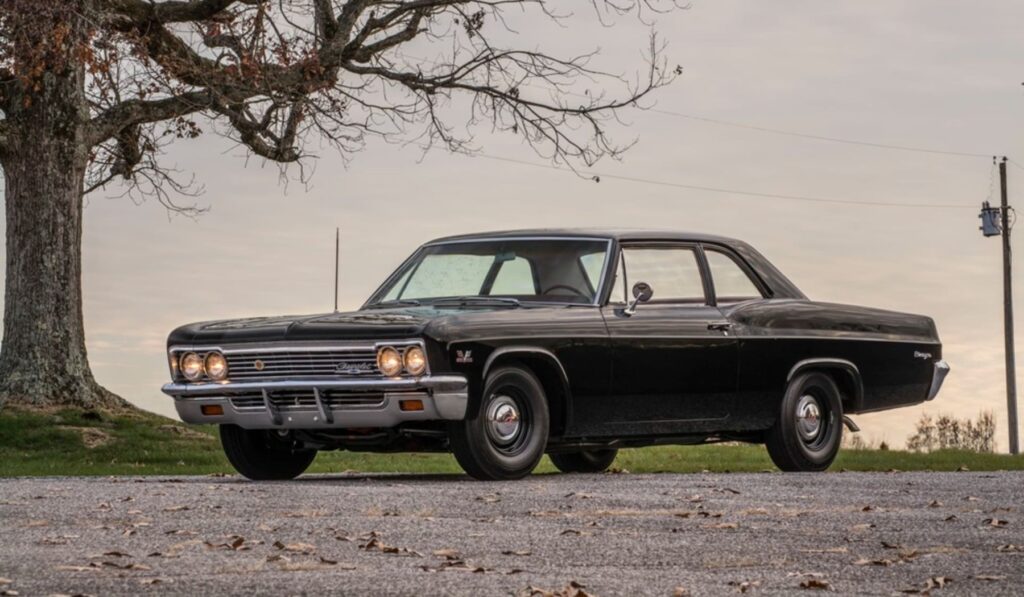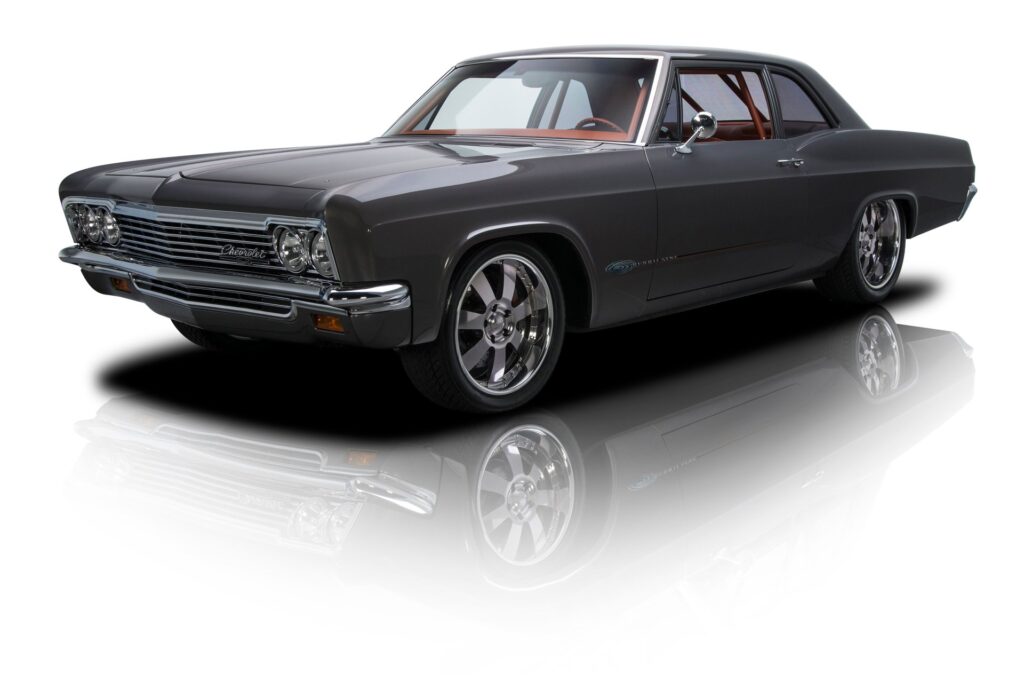Table of Contents
ToggleThe 1966 Chevrolet Biscayne: A Classic Icon
The 1966 Chevrolet Biscayne is a classic car that embodies simplicity, style, and functionality. Known for its affordable price and robust performance, the Biscayne was a popular choice for families, businesses, and enthusiasts. In this article, we will explore the 1966 Chevy Biscayne, its features, specifications, and variations, including the 1966 Biscayne 4-door and its comparison to the 1966 Chevy Bel Air 4-door. Additionally, we’ll present key information in table and graph formats to keep you informed and engaged.

History of the 1966 Chevy Biscayne
The Chevrolet Biscayne was introduced by General Motors in the late 1950s as a no-frills, full-size car. By 1966, the model had evolved to include modern styling and powerful engine options. It was widely appreciated for its simplicity and reliability, making it a favorite among budget-conscious buyers and fleet operators.
Key Features of the 1966 Chevrolet Biscayne
Exterior Design
-
Sleek and streamlined body design with minimal chrome accents.
-
Available in multiple colors with options for two-tone finishes.
-
A choice between 2-door and 4-door models.
Interior
-
Basic yet functional interior with durable upholstery.
-
Bench seats to accommodate up to six passengers.
-
Simplistic dashboard with essential controls.
Performance
-
Base engine: 230 cubic inch inline-6, producing 140 horsepower.
-
Optional V8 engines, including the 327 and 396 cubic inch options, delivering up to 425 horsepower.
-
Available with manual or Powerglide automatic transmissions.
Variations: Biscayne vs. Bel Air
The 1966 Chevy Bel Air was another full-size model from Chevrolet. While the Biscayne was marketed as the entry-level car, the Bel Air offered slightly more luxurious features. Here’s a quick comparison:
| Feature | 1966 Chevy Biscayne 4-Door | 1966 Chevy Bel Air 4-Door |
|---|---|---|
| Price (Base Model) | $2,360 | $2,580 |
| Engine Options | Inline-6, V8 | Inline-6, V8 |
| Interior Features | Basic upholstery | Enhanced upholstery |
| Exterior Styling | Minimal chrome | Moderate chrome accents |
| Target Audience | Budget-conscious buyers | Mid-range buyers |
Production Numbers
Chevrolet produced a significant number of Biscaynes in 1966. Below is a graph showing the estimated production numbers of the Biscayne compared to the Bel Air and Impala, another popular model from the same year.
Production Numbers for 1966 Chevrolet Models
| Model | Production Estimate |
| Biscayne | 110,000 |
| Bel Air | 150,000 |
| Impala | 650,000 |
Why the 1966 Chevy Biscayne Remains Popular
The 1966 Biscayne has retained its popularity among classic car enthusiasts due to its straightforward design, powerful engine options, and affordability. Restorers and collectors often appreciate the car’s potential for customization, whether maintaining its original charm or upgrading for modern performance.

Conclusion
The 1966 Chevrolet Biscayne is a testament to Chevrolet’s ability to produce affordable and reliable vehicles without compromising on performance or style. Whether you’re looking at a 1966 Biscayne 4-door for restoration or simply exploring the history of Chevrolet’s full-size lineup, this model holds a special place in automotive history. For buyers comparing it to models like the 1966 Chevy Bel Air, the Biscayne offers a unique appeal with its minimalist approach.
If you’re a fan of classic cars or considering adding a 1966 Chevy Biscayne to your collection, this timeless classic is sure to turn heads and bring a touch of nostalgia to the road.
Frequently Asked Questions (FAQs)
1. What engines were available for the 1966 Chevy Biscayne?
The 1966 Biscayne came with a base 230 cubic inch inline-6 engine producing 140 horsepower. Optional V8 engines included the 327 and 396 cubic inch variants, delivering up to 425 horsepower.
2. How does the 1966 Biscayne differ from the 1966 Bel Air?
The Biscayne was an entry-level model with minimal chrome and basic interior features, while the Bel Air offered more luxurious upholstery and exterior accents. The Bel Air also had a slightly higher price point.
3. Was the 1966 Biscayne available in a 4-door version?
Yes, the 1966 Biscayne was available in both 2-door and 4-door configurations.
4. How many 1966 Biscaynes were produced?
Approximately 110,000 units of the 1966 Chevy Biscayne were produced.
5. Is the 1966 Chevy Biscayne a good choice for restoration?
Yes, the Biscayne is popular among restorers due to its affordability, simple design, and availability of parts. It’s also highly customizable.
6. What was the starting price of the 1966 Biscayne?
The base model of the 1966 Biscayne started at around $2,360, making it an affordable choice at the time.

